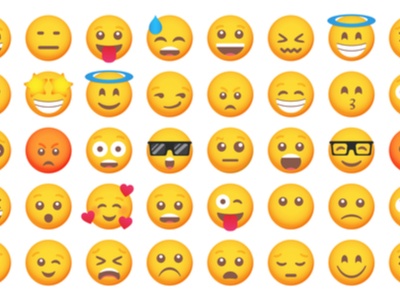Over the last decade emojis have become so wildly popular and accepted that everyone from kindergarteners to grandparents are using them to express emotions and messages quickly and succinctly. Within a short amount of time emojis have become an integral part of all different types of communications – from social media posts to family chats, messages, for online slots real money casino gaming, work-related alerts and more.
Where did emojis come from? How did society return to the pictographics of the Stone Age to communicate both light-hearted and serious messages?
History
Within a few short years emojis have become a recognized component of daily communications. The Paleolithics of the Ice Age may have had the idea first when they created their art 40,000 years ago on the walls their caves but the modern variation of those etchings emerged just a few years ago with Professor Scott Fahlman of Carnegie Mellon.
In 1982 Fahlman noticed that jokes that were being posted on an internal online bulletin were being misinterpreted. What one person saw as funny was seen by another person as offensive or insulting. Fahlman believed that text doesn’t always convey content effectively – hand gestures, vocal tonality and facial expressions that accompany spoken communications are absent when that material is delivered through text. He suggested that the :-) image be added to joke posts that were meant to be funny and a :-( image added to serious posts.
Other staff members and students at Carnegie Mellon started to use those graphics and over time, the images started to denote pleasure/displeasure. Over time other Carnegie Mellon students came up with their own images that could express a wider range of emotions.
When people started to use the Internet more widely, those images transferred to online usage easily. Soon, Japanese artists created the kaomoji face character from anime and manga. Those characters, crafted with letters, punctuations and characters from multiple languages were meant to convey additional emotions through simple, expressive eyes and mouths.
From those upright emotions a Japanese interface designer sought ways to convey complex meaning over text. Shigetaka Kurita was inspired by the Japanese character set and local road signs to create a collection of emojis for the popular internet platform NTT DoCOMo. When those emojis proved to be extremely successful Au and Softbank Japanese mobile carriers designed a new set of emojis. But each set was proprietary so the emojis created by each company couldn’t be used elsewhere.
Uniform Code
In 2007 a Google team, recognizing the need to unify emoji pictograms across multiple platforms, requested that the Unicode Consortium create universal emoji standards. The Consortium was founded in 1987 to create a Unicode -- a universal character encoding scheme that ensures that all platforms and all operating systems use the same text code. Today all devices adhere to Unicode standards for text encoding and, in 2007, Unicode 5.2 adopted a uniform code for 114 emojis.
Apple took the next step when 2 Apple engineers proposed that the Consortium adopt the addition of 608 new emojis into the Unicode Standard. In the early years emojis were gaining popularity in the Japanese market but were largely unknown in the West. The emojis’ popularity grew and by the time Apple and Android created emoji keyboards, their use began to become integrated into textual communication in all languages.
Unicode Standard provides guidelines and a general “core” design to indicate what an emoji should look like. But designers decide on the final implementation. Each company designs their own emoji brand and when they deviate – for instance, when Google released a “hairy emoji” for Android 4.4 with an unusual yellow heart design, the backlash caused Google to revise the design quickly.
Meanings
Not all emoji meanings are clear. For instance, the direction in which an emoji is facing can change the meaning entirely. Or two people can read the same emoji in a different way – sometimes with humorous results. Emojis can also have cultural meanings. For instance
- The waving hand symbol is generally viewed as a “hello” in Western culture while in China, it’s sometimes used by one partner in a couple who wants to break up
- The thumb’s up symbol, in Western culture, means “OK” or “I agree.” In many areas of the Middle East including Iraq, Iran and Afghanistan, a thumbs up means “**** you” and is seen as offensive and an insult.
- Don’t send a Chinese person an emoji of clapping hands. They will not only not see it as a sign of congratulations or acknowledgement but will believe that you are inviting them to join them for some hanky-panky!
- Speaking of hanky-panky, the emoji with raised index and little fingers is read, in some Latin countries like Uruguay, Brazil, Spain and Cuba, to indicate adultery.
- The emoji that shows the tips of the thumb and index finger placed together is considered rude in some countries and is equivalent of someone sticking up their middle finger in the Western World.
- Believe it or not, the little brown smiling “doo-doo” can be a symbol of good luck in Japan and is derived from a play on words in the Japanese language “kin no unko” which means “good luck” in Japanese. If you put that particular emoji in a message to a Westerner, don’t be surprised if the reaction is something less than grateful.
Regardless of how you interpret an emoji, you have to acknowledge their cultural impact. Emojis are now a permanent part of our modes of communication. They are included in advertisements, in social media posts, in text messages among friends and family and are even accepted in some companies as a way of creating a more relaxed and open atmosphere.
With all today’s technology, in some ways we’re back to what our ancestors discovered in their stone age caves – an image can say it all.






